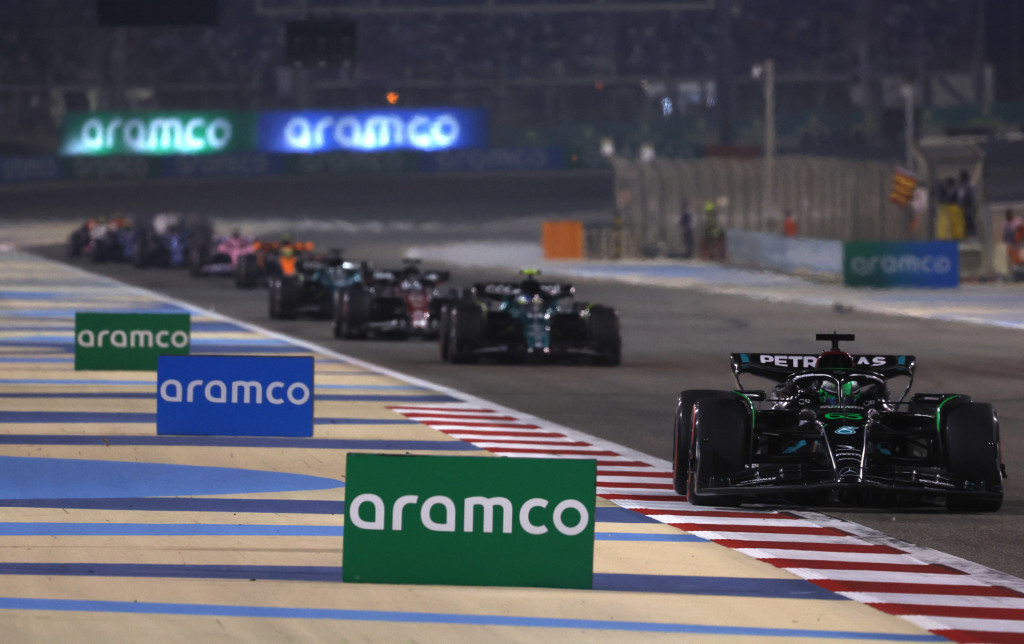How F1 engines produce 1,000 hp

Current formula 1 Engines produce up to 1,000 horsepower from just 1.6 liters of displacement, and now Engineering Explained has a video with the details that make it possible.
Technically, Formula 1 cars have “power units,” not “engines,” as the 1.6-liter turbocharged V6 is just one part of a hybrid powertrain. Since 2014, Formula 1 has mandated a setup that includes the tiny 90-degree V6 and two motor-generator units, the MGU-K (Motor Generator Unit-Kinetic) and the MGU-H (Motor Generator Unit-Heat). .
Both motor-generator units generate energy, but in different ways. The MGU-H is powered by the turbo’s excess exhaust flow, which would normally be discharged by a wastegate, and harvests energy that can be stored in a battery pack, used to spin the turbo when the throttle is off, or sent directly to the MGU-H. K. Attached to the crankshaft, the MGU-K can produce up to 160 horsepower to propel the car, or regenerative braking to recover more energy.

Bahrain Formula 1 Grand Prix 2023
With only 160 hp produced by the MGU-K, and only in short bursts when the battery is fully charged, the gasoline engine still does most of the work. This also requires a limited amount of fuel to be pumped out of the fuel cell (because Formula 1 no longer allows refueling during the race), at a flow rate specified by the rules. This rate – a maximum of 100kg/h – also means that while Formula 1 allows engines to rev up to 15,000rpm, power effectively peaks at 10,500rpm because that’s when the engines reach their peak reach maximum speed.
Teams claim that the fuel used in Formula 1 is similar to gasoline at the pump, so they have no advantage there. However, F1 engines are known to run much more efficiently than typical road car engines. Mercedes-AMG says its engines have achieved thermal efficiency of over 50%, meaning at least half of the potential energy of the fuel they burn is actually used to power the car. That’s the key to those big performance numbers.
Considering that most road car combustion engines struggle to reach 35% thermal efficiency, Formula 1 engineers have to use a lot of tricks. One of these is pre-chamber ignition – the use of a smaller combustion chamber above the main chamber – which allows for a leaner air-fuel mixture ideal for Formula 1 fuel flow limits. This feature is not race specific; This was one of the features that made the original Honda Civic’s CVCC engine so fuel efficient, and is currently used in Maserati’s 3.0-liter twin-turbo V-6.
Further increasing efficiency is a rule that allows compression ratios of up to 18:1. This is much higher than road car engines, and while it is not known whether teams will actually reach this limit, it leaves room for efficiency improvements. Higher compression ratios are more efficient, and even if they don’t run up to a ratio of 18:1, F1 cars are likely to run higher compression ratios than road cars and benefit from this advantage.
The final factor is turbo boost. In road cars, high boost pressure helps small engines produce big power, but in Formula 1 that may not be so easy. F1 engines can run on more or less boost than some road cars depending on the air-fuel ratio (the teams don’t disclose actual numbers), and that could also change depending on the circuit, with more in higher altitude Mexico City, for example Boost is used example.
Ultimately, it is the efficiency of the overall package that enables F1 engines to get so much power from so little displacement. As mentioned in the video, they also forego some features that are common on road vehicles, such as variable valve timing. This makes modern F1 engines true engineering marvels.
Check out the video above for a deeper insight into how F1 engines work.
